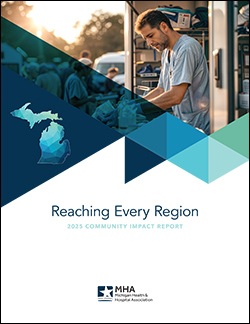In light of federal funding cuts, not-for-profit (NFP) organizations are increasingly exploring mergers as a strategic way to strengthen mission delivery, enhance sustainability, and better serve their communities. While mergers offer opportunities like reduced overhead and expanded services, they require careful consideration on details such as mission alignment and board engagement, among other aspects.
As many not-for-profit (NFP) organizations face reduced federal funding, some are beginning to explore mergers as a potential path forward. Mergers aren’t just about cost savings—they can also be a strategic tool to strengthen mission delivery, increase sustainability, and better serve communities.While merging isn’t the right move for every organization, it’s a conversation worth having, especially during periods of financial uncertainty. If your NFP is beginning to consider a merger, here are the key areas to evaluate before moving ahead.Why Even Consider a Merger?When funding becomes uncertain, NFPs often respond by cutting programs, reducing staff, or scaling back services. But in some cases, a merger can provide a way to grow stronger together. Joining forces with a like-minded organization may create opportunities to reduce overhead, expand reach, improve service coordination, and offer a more stable foundation for the future.That said, mergers are complex and should be entered into with clear goals, strong alignment, and a thoughtful process.What to Consider If You’re Exploring a MergerMission AlignmentOne of the strongest indicators of a successful merger is whether the missions align. Do the organizations have similar or complementary goals? Can they define a shared vision that leadership, staff, and stakeholders can fully support?Board and Leadership EngagementMergers require time, transparency, and trust. It’s essential that board members and executive leadership are open to the idea—not just as a last resort, but as a proactive strategy—and are prepared to engage in meaningful exploration and due diligence.Organizational CultureEven with similar missions, a merger can falter if the organizational cultures are misaligned. Differences in communication style, leadership approach, or internal processes can create friction. Early discussions about culture can help determine compatibility and surface any red flags.Financial TransparencyIt’s important that both organizations share a clear picture of their financial health, including liabilities, dependencies, and long-term obligations. A successful merger doesn’t require perfect financials, but it does require full transparency to ensure informed decision-making.Legal and Structural ConsiderationsNFP mergers can take different forms, from full integration to shared services arrangements. Key questions include: Will one entity be absorbed by the other, or will a new organization be formed? What will governance, leadership, and staffing look like post-merger?Impact on Clients and CommunityThe potential impact on service recipients should remain central to all merger discussions. Will the merger improve access to programs? Could any populations experience disruption or loss of services? Anticipating these impacts helps NFPs stay mission-focused.Communications PlanTransparent, consistent communication is critical, both internally and externally. Stakeholders, including funders, partners, clients, and staff, should understand the rationale for the merger and what to expect throughout the transition.One Step at a TimeNFPs exploring a potential merger don’t need to have all the answers at the outset. Starting with the right questions and engaging a trusted expert like CSH can help clarify whether a merger makes sense and how to approach it responsibly.If your organization is considering a merger or partnership, now may be the right time to initiate early conversations with a CSH advisor.  Max Kraus Max Kraus
Senior Manager Max works on a variety of engagements ranging from financial statement compilations and reviews to audits and attestation services, working primarily with not-for-profit and manufacturing clients. Copyright Clark, Schaefer, Hackett & Co. All content provided is for informational purposes only. Matters discussed are subject to change. For up-to-date information on this subject please contact a Clark, Schaefer, Hackett & Co. professional. Clark, Schaefer, Hackett & Co. will not be held responsible for any claim, loss, damage or inconvenience caused as a result of any information within these pages or any information accessed through this site. |




 Max Kraus
Max Kraus





